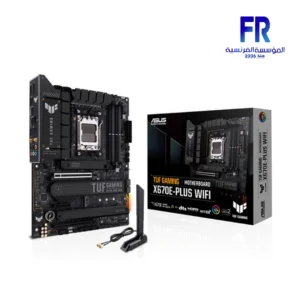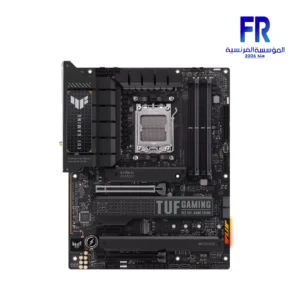An ATX motherboard is a standard form factor for computer motherboards. It is the most common form factor for desktop computers, and it is also used in some servers and workstations. ATX motherboards are typically larger than other form factors, such as Micro ATX (mATX) and Mini-ITX (ITX), but they also offer more expansion slots and features.
ATX Motherboard Specifications
- Dimensions: 305 mm (12 inches) x 244 mm (9.6 inches)
- Expansion slots: 7 to 10 PCIe slots, 2 to 4 PCI slots
- Memory slots: 4 to 6 DIMM slots
- SATA ports: 4 to 8 SATA ports
- M.2 slots: 1 to 2 M.2 slots
- USB ports: 4 to 12 USB ports
- Audio: Realtek ALC887 codec or similar
- Networking: Gigabit Ethernet, Wi-Fi (optional)
- Power connectors: 24-pin ATX power connector, 4-pin or 8-pin CPU power connector
- Form factor: ATX
THE ATX Motherboard Features
- Support for a wide range of processors, including Intel Core, AMD Ryzen, and VIA Nano processors
- Large number of expansion slots for adding graphics cards, sound cards, and other hardware
- Support for fast storage technologies, such as NVMe SSDs
- A variety of USB ports for connecting peripherals
- High-quality audio codecs for superior sound quality
- Gigabit Ethernet for reliable wired internet connectivity
- Wi-Fi (optional) for high-speed wireless connectivity
ATX Motherboard Limitations
- Larger size than other form factors, such as mATX and ITX
- May be more expensive than other form factors
- May not be suitable for small form factor (SFF) cases
Overall, A TX motherboards are a versatile and powerful option for desktop PCs. They offer a wide range of features and support for a variety of hardware, making them a good choice for both home and office use.
Here are some popular ATX motherboards:
- ASUS ROG Strix Z690-A Gaming WiFi
- MSI MAG B660 Tomahawk WiFi
- Gigabyte B550M DS3H
I hope this information is helpful. Please let me know if you have any other questions.







